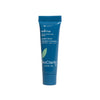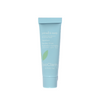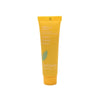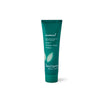How To Tell If You Have Over-Exfoliated Skin
By Abby Vinas
•
0 Comments

Exfoliation is a process that helps remove dead skin cells to reveal the newer, younger skin cells underneath. As we get older, our cell turnover rate slows down, which means dead skin cells may be building up more rapidly, resulting in dullness and rough texture. Exfoliation is one of the most effective ways to get rid of dull skin and get your healthy glow back. What’s even better is that exfoliation can be done from the comfort of your own home but keep in mind that like many things, moderation is key.
Over-exfoliation is possible and sometimes it happens to the best of us. While it can be easily avoided, it’s just as easy to fall victim to it. To help you take proper care of your skin, we’ll cover the different signs of over-exfoliated skin and what you can do to treat it.
What are the Signs of Over-Exfoliation?
When your skin tells you something, you need to listen. It’s important to keep a close eye on your skin at all times so that you’re aware of when something in your skincare routine needs to change. Over-exfoliation refers to when your skin is exfoliated more often than necessary, resulting in various forms of irritation and skin damage. If you think you’re suffering from over-exfoliated skin, you may be experiencing one of more of the following:
- Excessive dryness and flakiness in certain areas or on the entire face
- Burning sensations after using an exfoliator
- Red and irritated skin that may also be painful to the touch
- Inflammation
- Swollen or puffy skin
Each of these is an example of how your skin tells you that it’s unhappy and needs a little extra love and attention. Hopefully you catch these signs of overexfoliation early so you can make the necessary changes to your routine and have your skin back to normal in no time.
Can Over-Exfoliating Cause Breakouts?
Those who struggle with acne often turn to exfoliation to help unclog pores and reduce breakouts. Getting rid of as many dead skin cells as possible and smoothing out texture is good for improving your complexion, right? Regular exfoliation does benefit acne-prone skin, however, over-exfoliation can actually contribute to breakouts. What you don’t want is to irritate skin that’s already inflamed, which will only worsen the inflammation and cause new breakouts instead of prevent them. If you find yourself in that situation, we’re happy to tell you that you’re in the right place.
How to Treat Over-Exfoliated Skin
There are several things you can do to help repair your skin and nurse it back to health. Here are our top tips for treating over-exfoliation:
Put Exfoliation on Hold
This one may be obvious, but we’ll say it anyway: stop using any exfoliating products immediately until your skin has returned to normal. Continuing to exfoliate will only irritate your skin further and may even cause damage. The amount of time it takes for skin to heal will vary since everyone’s skin is different, but in the meantime, keep your daily skincare routine simple. Stick to a mild cleanser and lightweight moisturizer.
Once your skin has healed, you can add your exfoliator back into your routine, but you may want to start off slowly. Try exfoliating just once a week, then work your way up to a safe frequency based on your skin type.
Protect Your Skin From the Sun
The sun’s harmful UV rays can irritate over-exfoliated skin even further so lather on sunscreen everyday, even if you plan to spend your day indoors or in the shade. UV rays can still reach your skin through windows and other reflective surfaces plus your skin is susceptible to damage from blue light emitted from digital devices. Blue light can cause inflammation, trigger skin conditions like melasma, and even contribute to fine lines and wrinkles.
For total skin protection, choose a sunscreen that defends against more than just UV exposure. Our Defense Duo includes SunFilter and SunShady, which are mineral sunscreens for face and body that protect against UV rays, blue light, environmental pollutants, and free radicals. They also moisturize skin with the help of sugarcane-sourced squalane and grape seed, and boost the power of antioxidants by up to 500%.
More than sun-proof. Life-proof.
Protect your face and body from harmful UV rays, free radicals, blue light, and environmental pollutants with these non-nano 100% mineral zinc oxide sunscreens for everyday use.
Protect Your GlowWash Your Face Gently
Over-exfoliated skin should still be cleansed daily. When washing your face, use lukewarm water since using water that’s too warm or hot can strip your skin of its natural oils and disrupt your skin barrier, regardless of whether your skin is over-exfoliated or not. Massage your cleanser onto your skin using gentle upward motions instead of rubbing harshly. After rinsing, pat your face dry with a clean towel.
Additional Tips
Even if you aren’t currently suffering from over-exfoliated skin, it’s still important to follow safe exfoliation practices. Here are some additional tips for exfoliating your skin.
Always Moisturize
Exfoliation can cause dryness and leave your skin a bit more sensitive than usual so following up with moisturizer is the best way to keep your skin healthy and hydrated. Use a moisturizer that’s loaded with calming, soothing ingredients to help your skin relax and recover. Hydrate is the perfect lightweight and non-comedogenic option for those with oily skin whereas something that provides deeper hydration would be the best fit for dry skin. Drink It Up is a super-hydrating, antioxidant-rich, and oil-free serum designed to soak your skin in moisture, promote cell turnover, protect against environmental stressors and premature aging, and keep your skin dewy and soft. To help simplify your skincare and makeup routine, try Primed & Ready, a 2-in-1 silicone-free hydrating primer that not only doubles as an everyday moisturizer, but also blurs pores and imperfections, preps your skin for flawless makeup application, and extends the wear of your foundation or powder to lock in your look all day long.
Establish an Exfoliation Schedule Based on Your Skin Type
When it comes to frequency and method, your skin type plays a critical role. The goal of exfoliation is to improve the appearance of skin, not harm it, so be mindful of your skin type in order to reduce the risk of irritation and achieve the best results possible.
Oily skin and acne-prone skin can benefit from being exfoliated 3-5 days a week if your skin allows it, while exfoliation should be limited to once or twice a week if you have sensitive or dry skin. As with any skincare product, carefully monitor how your skin reacts whenever using a new exfoliator. It can take some time for your skin to experience a negative reaction -- for some individuals, their skin may react right away, but others may not experience a reaction until a few days or weeks after the first use.
Use One Exfoliator at a Time
We know it can be quite exciting to build a skincare collection and experiment with new products. However, trying too many things at once can do more harm than good. Prevent going overboard with exfoliation by sticking to one exfoliator at a time. Using more than one exfoliator at once can cause irritation and unwanted side effects. Once you find an exfoliator that works well for you, use it consistently to help you get your best glow yet. You can alternate between different exfoliators to experience the different benefits, but just be sure to monitor your skin closely and cut back if you notice any signs of irritation.
Find the Right Exfoliation Method
Unless you’re one of the lucky ones and have tried a variety of skincare products without experiencing any issues at all, you’ve probably found that skincare involves a lot of trial and error -- the same applies to exfoliation. It may take some experimenting but the good news is that there are plenty of options to choose from if one product ends up not working for you. The two main methods are chemical exfoliation and physical exfoliation.
Acid Exfoliators
Acid exfoliators include alpha hydroxy acids (AHAs) and beta hydroxy acids (BHAs). AHAs are water-soluble and work by peeling away the topmost layer of skin to allow new skin cells to come to the surface. Lactic acid, citric acid, and malic acid are a few types of AHAs but glycolic acid is the most well-known. Glycolic acid is often found in chemical peels and is particularly effective for treating sun-damaged skin, reducing fine lines and wrinkles, and boosting collagen production.
On the other hand, BHAs are oil-soluble and work by drawing out excess oils and dead skin cells from your pores. These work best in skincare products when used in concentrations of 1-2%. Salicylic acid is a BHA commonly used in products designed for acne and blemish control since it not only helps clear pores of dirt, oil, and bacteria, but also gently exfoliates the skin. You can find 2% salicylic acid in Treat, our vegan acne treatment gel that also contains soothing oat kernel so you can battle blemishes without the burn.
Physical Exfoliators
Physical exfoliators, also known as mechanical exfoliators, involve rubbing or manual scrubbing of the skin using tools like a loofah or brush, or using products containing gritty ingredients. Because of this, they tend to be slightly harsher than chemical exfoliators but if your skin isn’t on the sensitive side, physical exfoliants may work well for you.
When using a physical exfoliator like a face scrub, use circular motions and be careful not to tug or scrub too aggressively, which can cause micro-tears in the skin. Regardless of which exfoliation method you choose, follow the directions on your product label to ensure you’re using it properly.
Enzyme Exfoliators
Often derived from plants and fruits like papaya and pineapple, enzymes are tiny molecules that help break down dead skin cells on the surface of the skin to reveal a brighter, more even complexion. Enzymes break down keratin in the upper layer of the skin, which allows dead skin cells to slough off. They exfoliate without disrupting the skin’s pH, making them the most gentle method of exfoliation when compared to acids or physical exfoliation. If you have sensitive skin, enzyme exfoliation is exactly what you’re routine is missing! You can find enzymes in Barefaced, our exfoliating enzyme jelly cleanser that's gentle enough for everyday use, and Brighten Up Sunshine, our brightening and exfoliating clay masque.
Go Naked with Barefaced
This non-foaming jelly cleanser gently exfoliates and deeply cleans while clearing and purifying pores.
Shop BarefacedAvoid Using Body Exfoliators on Your Face
Don’t forget that your body benefits from regular exfoliation, too. Using a body exfoliator in the shower is a great way to help keep your skin smooth and soft but you should never use one on your face. Body exfoliators are too harsh for the skin on your face, which is more delicate and sensitive than the skin on your body.

Abby Vinas
Abby Vinas has long been an active member of the holistic health community, advocating in favor of its benefits to both our physical and emotional well-being. Her commitment to leading a healthy lifestyle has made her an authority on self-care practices. Abby is passionate about fitness, nutrition, and proper skincare, and is also an avid lover of avocado toast and dog-petting.













